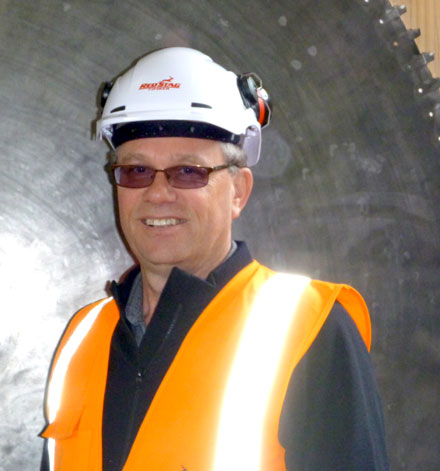
Marty Verry
Red Stag Group, which runs the largest sawmill in the Southern Hemisphere, plans to invest more than NZ$20 million developing a largescale cross-laminated timber plant at its wood processing site in Rotorua. Sources: NZ Advisor, Stuff NZ
The plant is expected to be operational by mid-2019, and produce more than 50,000 cubic metres of cross-laminated timber within two years, Red Stag Group chief executive Marty Verry said.
The company’s plans are conditional on draft building standards requiring full chemical penetration of cross-laminated timber being confirmed by the Ministry of Business, Innovation and Employment.
Red Stag owns the Waipa mill which it bought out of receivership following the collapse of the Central North Island Forest Partnership. It invested more than NZ$100 million developing New Zealand’s first ‘super mill’ on the site, so-called because it can process 1 million tonnes of logs a year. It is now expanding its operations to production of cross-laminated timber, where it sees demand increasing in line with the government’s KiwiBuild program which aims to deliver 100,000 affordable houses over the next 10 years.
New Zealand wood manufacturers see big potential opportunities for their industry in the future from engineered wood products, such as cross-laminated timber, which are becoming increasingly popular for multi-storey buildings around the world.
They are also gaining traction in New Zealand after recent earthquakes showed wooden buildings outperformed concrete and steel structures.
Property developer Bob Jones is erecting the country’s tallest wooden office building, at 12 storeys, in central Wellington using the product, while Sumitomo plans to build an 80-story building in Tokyo.
“Cross Laminated Timber (CLT) is a product on a rapid growth curve globally,” Mr Verry said. “It is one of the ‘massive timber’ group of products, along with others such as glulam, that is opening up the mid- and high- rise building market to wood.”
Mr Verry said there was strong demand in New Zealand for the wood and praised Nelson company XLam for developing the cross-laminated timber market on its own to date.
“We see the need now for a scale North Island producer so that between us we take the product mainstream,” Mr Verry said. “Our vision is that wood will be the norm in mid-rise buildings by 2030, and I can see the KiwiBuild target being achievable in the early 2020s as a result.”
The CLT division’s managing director Jason Cordes said the plant would create 40 new jobs, mostly in Rotorua.
“But more importantly, it has the potential to save thousands of dollars on the cost of housing and mid-rise buildings by reducing material cost, on-site labour costs and construction time,” he said.
CLT’s lightweight and flexible qualities means it performs well in earthquakes, and it has been a material of choice for a number of Christchurch rebuild projects. Highly fire-retardant, it is well regarded by environmentalists as a C02-absorbing alternative to steel and concrete. But one of its key advantages is that it can cut construction time by as much as 30% if used alongside prefabricated building methods.
Mr Cordes said the CLT-built Kaikoura municipal building was left unscathed after the massive earthquake “and immediately became the Civil Defence headquarters”.
He said the new plant would be launched next year and expected to produce more than 50,000 cubic metres of CLT within two years.
“That is the equivalent of around 2000 housing units.”
However, the plans hinge on Standards New Zealand adopting a standard requiring cross-laminated timber to be fully penetrated by a chemical such as boron to reduce the chance of rotting. Untreated timber has been banned for framing since 2003 after the rules were relaxed in 1995, prior to the leaky building crisis.
According to previous comments from Mr Verry, “envelope treatment” or partial treatment of the timber has been an option before a timber standards review committee attached to the Ministry of Business, Innovation and Employment (MBIE).
MBIE has previously declined to comment on what the committee is considering.







